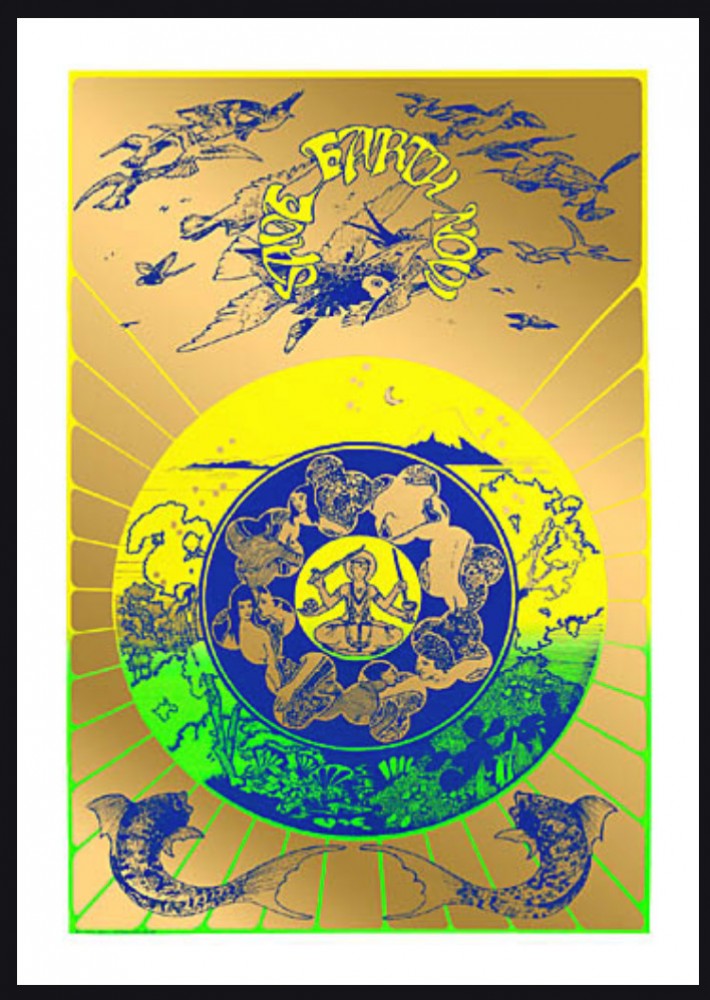Hapshash and the Coloured Coat
Courtesy of Bridgeman Editions
Michael English and Nigel Waymouth set up the design collaborative Hapshash and the Coloured Coat in the sixties. English was born in Bicester and studied at Ealing School of Art; Nigel Waymouth was born in India and studied Economic History at University College. The pair met in 1966 after Waymouth had opened a shop, Granny takes a Trip, on the King’s Road, Chelsea for which English had painted the shop front.
They worked together under various titles: Cosmic Visions, Jacob and the Coloured Coat before settling on Hapshash and the Coloured Coat in 1967. The name derived , Barry Miles recalls (1) ‘when we looked through books on Egyptian antiquities, including Barbara Mertz’s Temples, Tombs and Hieroglyphs and the E Wallis Budge translation of the Egyptian Book of the Deadand I told then the story of Queen Hatshepsut’s journey to the Land of the Punt… [later] Michael and Nigel could not remember the pronunciation of Hatshepsut and spelled it Hapshash instead – the ‘hash’ part could, of course, have been deliberate.
The artists developed silk screening techniques that merged two or three colours when the squeegee was pulled across the screen and amalgamated these colours with gold, silver and fluorescent colour. ‘Our concept was to plaster the streets of London with this brightly coloured and beautiful poster work at a time when most of the posters in the streets were rather drab and wordy ….It was a precursor to a sort of graffiti.’(2) The labour intensive production methods meant that relatively few posters were printed. The works were marketed by Osiris Visions (set up by Joe Boyd, founder of the UFO Club), and at first the UFO posters were sold through IT for five shillings (25p) each, the price was later raised to actually cover the costs and to make the venture viable.
Hapshash and the Coloured Coat explored new design elements of complicated psychedelic colours and convoluted middle eastern pattern. The subject matter was influenced by Pop, Sex and Drugs, although Hapshash were mainly concerned with Op-Art and three dimensional effects. The link between the graphic work of the 1960s and that of the Symbolist Movement of the earlier part of the century is evident in both execution and content..
By the earlier 1970s the hippy movement was all but dead. English returned painting and printmaking, making the occasional foray into commercial art with posters for companies such as British Airways and McDonalds. He published 3-D Eye (1979) and The Anatomy of Illusion (1989), and in 1995 he worked on the BBC production of Gormenghast. English died on 25 September 2009.

THE ART CAR BOOT FAIR GOES TO SPACE
Have you got your tickets yet?
